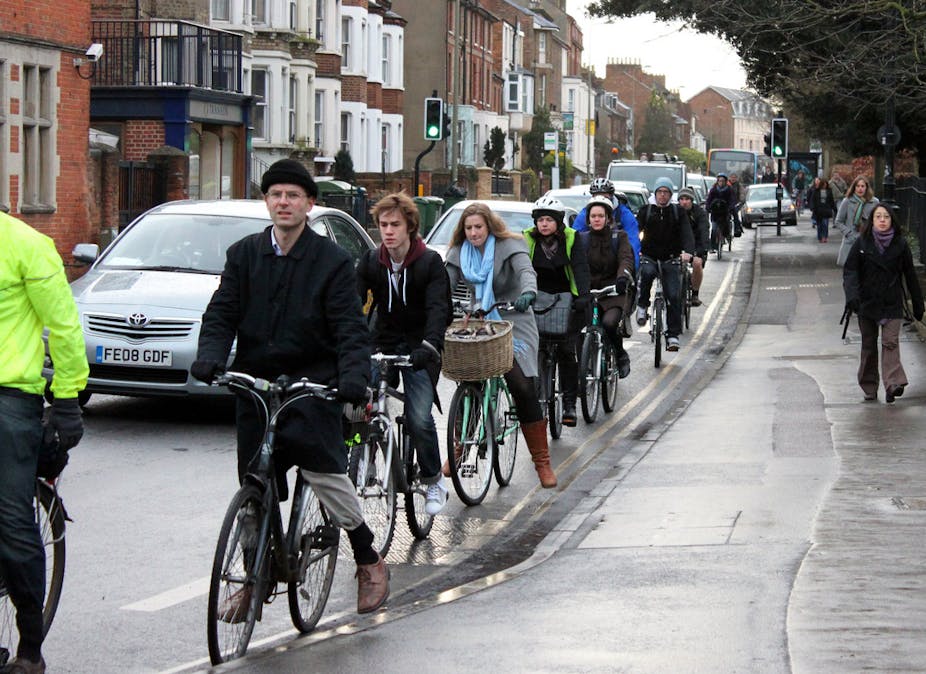The bare-headed cycling movement has recently stirred from hibernation in the United Kingdom. Freedom to ride with the wind in their hair remains, but perhaps not for very much longer.
The British Medical Association has thrown its weight behind mandatory bicycle helmet laws, and some fear this is the penultimate falling domino before Brits succumb to lidded cycling.
Australians have undergone the helmet experiment for two decades now, so who better to set the record straight for our Northern brethren? Rest assured, there’s nothing to fear and everything to gain from the humble helmet.
Good or bad?
First, some myth busting: cycle helmets don’t really work, do they? In fact, the only time a helmet is useless is when it’s hanging from your handlebars.
Robust studies show helmets reduce head injury risk by up to 74%. Recently, Sydney researchers found cyclists who crashed without helmets were five times more likely to sustain severe head injuries.
This is serious trauma - 70% of people in this injury category end up on ventilators in intensive care.
People familiar with the laws of physics won’t be surprised. When the head hits the tarmac (or a car bonnet) the result is a shattering release of energy. Helmets dissipate that force by deforming, thus sparing the same fate for skull and brain below.

A British review found a helmeted head could fall four times the distance of a bare pate for the same risk of injury.
But how likely is your head to come to grief in a bike crash? A study I led with Alfred Health and Monash University found nearly half of riders who ended up in the emergency department hit their heads. And the risk of head injury went up threefold when riding over 20 kilometres per hour, which is a pretty conservative commuter speed.
Yes, but…
What about the study that showed bike helmet laws only limit head injuries by dissuading people from riding? That chestnut has been cracked by researchers who compared head and arm injuries in hospitalised riders.
Arm injuries are common in bike crashes so they’re a good indicator of total rider numbers. Relative to arm injuries, head injuries dropped by over 50% between 1991, when helmet laws came in, and 2010. That’s good evidence helmets rather than cycling refusal stemmed the flow of injured heads.
But don’t drivers endanger helmeted cyclists by overtaking closer because they see them as less vulnerable? Yes, but the solution isn’t to ditch the only protection a cyclist has. Better to retain helmets, and educate drivers to keep their distance.
Interestingly this “risk compensation” research also shows some cyclists take more risks themselves when wearing a helmet. Conceded, but antilock brakes saw car drivers following closer and braking later, and few think we should drop this safety feature. Instead we rely on education and enforcement to make tailgating history.
Ethical considerations
Okay, helmets work. But who needs micromanagement from the nanny state? Is riding with wind on scalp a non-trivial right best left untrammelled?

Granted, John Stuart Mill, the architect of liberalism, built a strong case that competent adults should be free to make their own choices. But his caveat was that freedom ends when harm to others begins; the affliction of head injury, catastrophic as it can be, extends beyond the victim.
Access Economics estimates each case of moderate brain injury costs A$2.5 million. In severe injury, the figure rockets to A$4.8 million. Much of this cost is met by the public purse for emergency medical care.
As the popularity of cycling soars, this expense may demand limiting other services. As a guide, recent UK government cuts included nursing coverage on general wards, birthing centres and obesity treatment.
What of smoking, alcohol and fast food, which also generate medical burden, yet escape veto? In fact, Australia now outlaws smoking in many public places including restaurants, pubs and playgrounds.
Public consumption of alcohol is also widely regulated. And the obesity epidemic has seen calls for tighter control of junk food advertising.
Isn’t this the thin end of the wedge? Next, we’ll be calling for pedestrians to wear helmets. Certainly, falls in the elderly and the ever-present threat of cars account for many pedestrian head injuries.
But head-injury risk increases with speed and exposure to motor vehicles. Cyclists are at greater risk on both counts, and therefore belong in a separate category.
So, kinsmen across the waves, fret not. To wed oneself with a helmet is to begin a lifelong romance. Like all newly betrothed, however, there will be a few pre-nuptial jitters. But they will pass and a perfect union could soon be realised.

